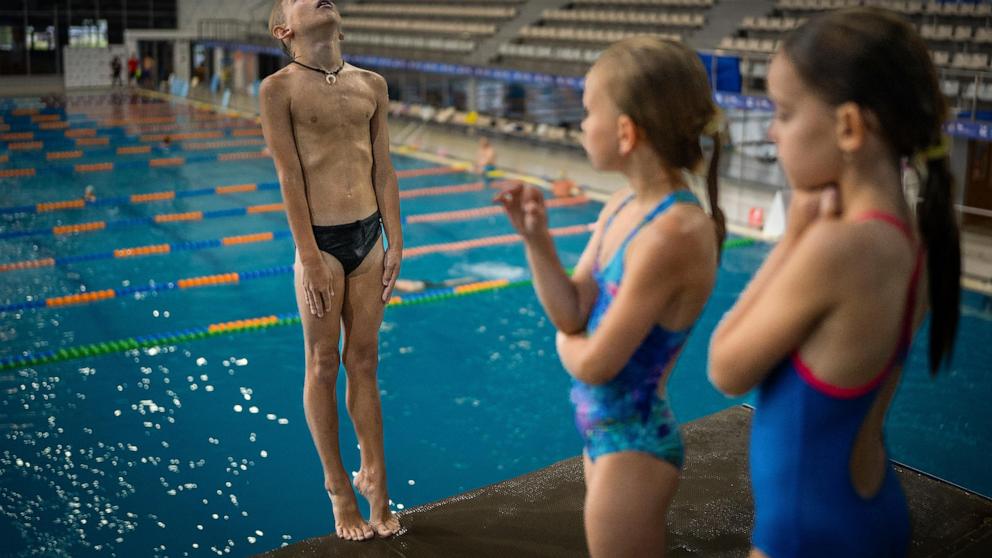A larger war could trigger a massive rocket attack on Israel
- Israel and Hezbollah regularly exchange gunfire, but the two also constantly exchange escalating comments.
- Hezbollah has increased its fighting power enormously over the past two decades.
- The Iranian-backed militants now have a huge arsenal of ammunition that could threaten Israel.
Israel is at risk of a major war, and there is a possibility that its cities and strategic military targets will be subjected to a massive bombardment the likes of which the country has never experienced before.
Israel and Hezbollah, a militant terrorist group operating from Lebanon and backed by Iran, have been exchanging fire regularly since the October 7 cross-border massacre by Hamas, which also enjoys significant support from Tehran.
These exchanges have so far remained relatively limited to the border regions, but in recent weeks tensions between Israel and Hezbollah have escalated, raising fears that the two bitter enemies could be heading toward an inevitable collision course.
United Nations officials have warned that such a fight would have devastating consequences and would lead to widespread death and destruction.
For Israel, a major war with Hezbollah would look very different from the large-scale conflict it is currently waging against Hamas in the Gaza Strip. The Lebanon-based militants are a much more dangerous force with far more weapons and fighters.
In a fight with Hezbollah, Israel would need to have large quantities of ammunition because “this is a much more difficult conflict” than the one in Gaza, which is already tough enough, Daniel Byman, a former Middle East analyst for the US intelligence agency, told Business Insider in May.
Hezbollah has become stronger
Hezbollah has spent decades building up its arsenal and military capabilities. Before the 2006 Lebanon War, a month-long conflict against Israel, Hezbollah had about 15,000 missiles. Today, that number has risen to over 130,000, and some estimates put the stockpile of rockets and missiles as high as 150,000.
Analysts at the Center for Strategic and International Studies think tank wrote in a 2018 report: “Hezbollah is the world’s most heavily armed non-state actor, with a large and diverse stockpile of unguided artillery rockets, as well as ballistic, anti-aircraft, anti-tank and anti-ship missiles.”
Much of Hezbollah’s weapons arsenal consists of a variety of shorter-range unguided projectiles. The analysts said that while these weapons are not particularly accurate, they are present in sufficient quantities to raise concerns. The militants also have precision-guided weapons that can penetrate deeper into Israel.
“Hezbollah views its rocket and missile arsenal as its primary deterrent against Israeli military action,” the CSIS analysts said, noting that they “are also useful for rapid retaliation and prolonged military confrontations.”
According to the Institute for National Security Studies, an Israeli think tank, Hamas began the ongoing Gaza war with as many as 30,000 rockets and missiles. While that is a much smaller number, it has nonetheless caused problems for Israel and demonstrated the importance of maintaining a large stockpile of weapons, especially as the country continues to spend heavily in Gaza.
“There was a pretty high rate of fire in that war. And that would be even more the case with Hezbollah,” said Byman, a senior fellow at CSIS’s Transnational Threats Project. “Hezbollah has much greater firepower. Israel would use much greater firepower in return.”
Israel has a sophisticated air defense network capable of countering a variety of threats, from short-range missiles to medium-range ballistic missiles in the atmosphere. The Iron Dome, David’s Sling and Arrow systems have all been deployed since October 7, but have largely been able to protect the country from enemy munitions.
But a major Hezbollah war could overwhelm some of these systems – a scenario that raises concerns in Washington.
During the 2006 war, Hezbollah fired between 100 and 200 rockets a day at Israel, according to estimates by the Foundation for Defense of Democracies think tank. In a future war between the two, the militants could fire more than 4,000 rockets a day in the early stages of a conflict, but they would eventually have to reduce that number to 1,500. Even then, that would still be a significantly higher rate of fire than in 2006 and could put a huge strain on Israel’s defenses.
“Hezbollah’s means of attack are highly impressive,” said the Israeli think tank INSS in an October 2023 assessment. In a war with Hezbollah, the group’s vast weapons stockpile “would require Israel to shift its countermeasures systems to target protection of civilian and military infrastructure.”
The Britain Israel Communications and Research Center, an Israeli advocacy group, wrote in an updated October 2019 briefing that “even with Israel’s early warning and missile interception system, missiles fired in large numbers at major population centers can be deadly, forcing civilians to stay in or near shelters, leading to the closure of schools and businesses, and paralyzing normal life.”
“Nobody” wants a war
Earlier this week, Hezbollah demonstrated its firepower when it fired more than 200 rockets and attack drones at Israel in retaliation for the killing of a senior commander, one of Hezbollah’s heaviest attacks in the nine-month conflict.
Aside from the air threat, Hezbollah also has a manpower strength of more than 50,000 fighters, according to a May 2024 Congressional Research Service report. Hamas, on the other hand, was estimated to have had up to 30,000 fighters at the start of the Gaza war, and thousands of its members have been killed or wounded since October.
In addition to Hezbollah’s potential fighting force, thousands of other fighters from Iran-backed groups across the region have agreed to fight against Israel in the event of a full-scale war.
For now, the conflict between Israel and Hezbollah is relatively calm, but fears are growing that it may not last that way. The militants have tied their actions to a ceasefire in Gaza, saying that only then will the attacks stop. And while some Western countries are calling for de-escalation, the two enemies continue to threaten each other and say they will use force if necessary.
More than two dozen soldiers and civilians have already been killed in Israel, and more than 450 in Lebanon. The majority of the dead are militants, but civilians have also been killed. In addition, tens of thousands of people have been displaced from their homes in both countries.
“One of our main goals from day one – since October – has been to do everything we can to make sure that this conflict does not escalate,” US Secretary of State Antony Blinken said at a Brookings Institution event earlier this month, adding: “Nobody actually wants a war.”



